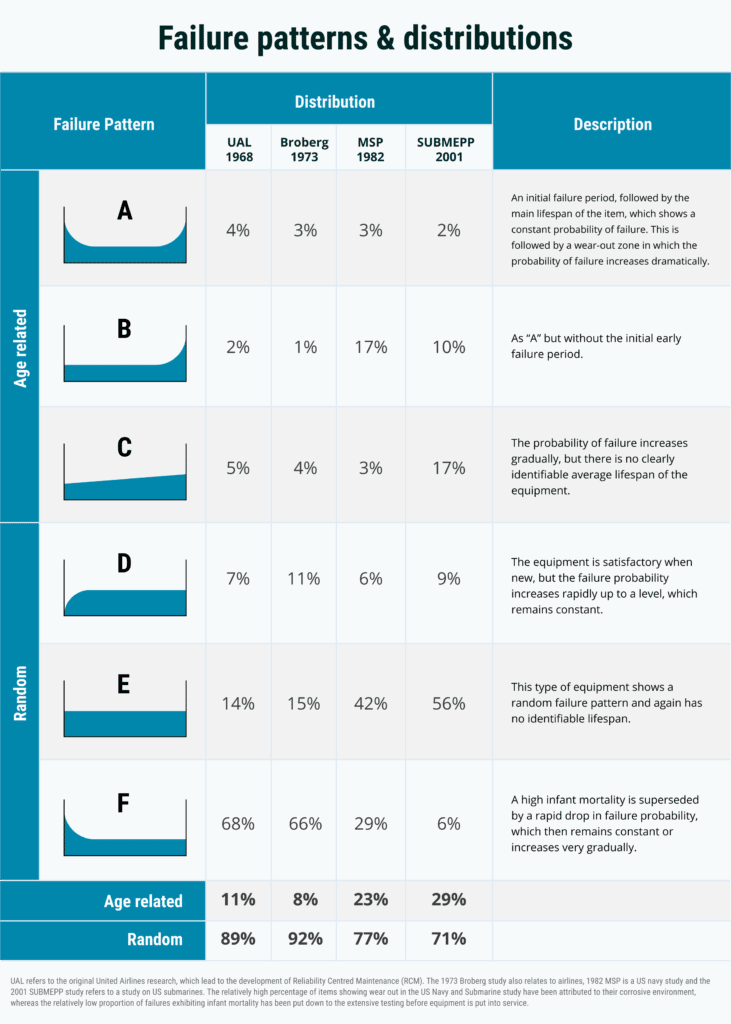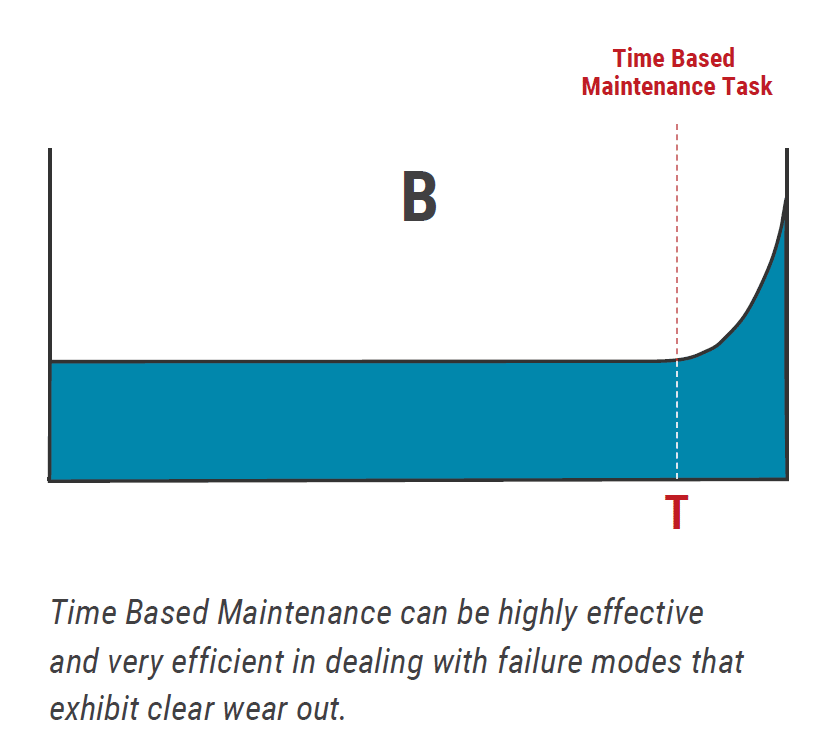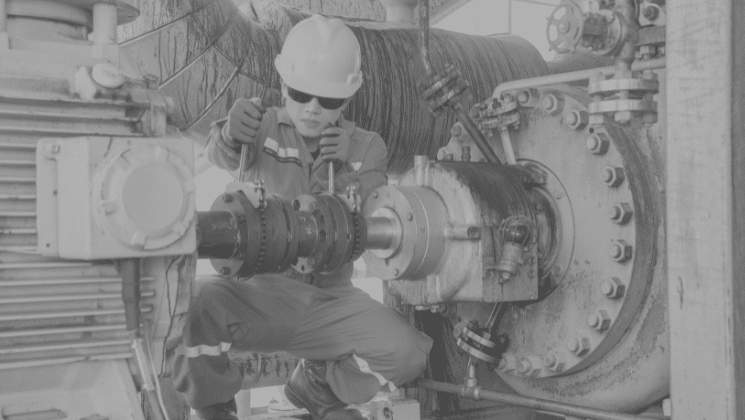If you take a look at your preventive maintenance program, you’ll probably see a LOT of time-based maintenance tasks. After all, it is the easiest type of preventive maintenance task to execute. You simply conduct your task at fixed time or usage intervals. It doesn’t really get much easier than that.
But chances are, you’re not using time-based maintenance correctly. For time-based maintenance to be effective it needs to be used on equipment that exhibits age-related failure modes. But research shows that most failure modes are NOT age related. This means that most of our preventive maintenance should not be time-based.
To prove my point, I’d like to share 4 studies that delve deeper into this topic.
The Research: Most failure modes are not age related
- UAL 1968, is the original United Airlines research conducted by Nolan and Heap in 1968. This was the research that underpinned the development of RCM.
- Broberg 1973 is another airline study conducted a few years after the RCM study, and came to essentially the same conclusions about the distribution of failure patterns.
- MSP 1982 is a more recent study conducted by the United States Navy.
- SUBMEPP 2001 is the latest study that I’ve seen quoted in literature and is a study on US submarines.
These in-depth research projects all demonstrated that most failure modes are not age-related.
Now… a lot of people have read about these studies. A lot of people have read about RCM. But few organisations actually apply the principles that follow from these findings. That’s why I summarised them in this chart.

This is a fairly complex chart with a lot of information. So let me briefly explain what you see here.
In the first column, you see the six failure patterns that Nolan and Heap identified in their groundbreaking work, developing RCM.
A, B, and C are age related failure patterns while D, E, and F are random failure patterns.
The next 4 columns contain the corresponding failure distribution obtained from the various studies.
Now…
I discuss this chart in more detail inside my course… and you’ll see plenty of interesting patterns like how infant mortality is more persistent in the airline industry… or how the corrosive environment of the navy and submarines possibly resulted in more age-related failure patterns…
But for now, if there’s one thing to take away from this chart, it should be that between 70 to 90% of failure modes are not age-related.
Meaning that the likelihood that these failure modes occur, does NOT increase over time.
Instead, it stays constant over time for most failure modes. In other words, most failures occur randomly.
Implications for our preventive maintenance programs
This has major implications for our preventive maintenance programs. Because if most failure modes are not age related, then we should be addressing these failure modes by some type of condition assessment or condition-based maintenance.
And so, a very large part of your preventive maintenance program should be condition-based maintenance. NOT time-based maintenance. Yet somehow, most of our Preventive Maintenance programs are dominated with time-based maintenance tasks.
Do you see the disconnect? It’s one of the reasons why we spend so much money in our preventive maintenance yet see little to no improvements in our organisation. Now you might be thinking…
“Our industry is not related to airplanes or ships. Does this still apply to us?”
Yes, it does. Keep in mind that failure modes are not industry related. Failure modes are a function of the equipment you operate, and the environment you operate that equipment in.
A centrifugal pump is a centrifugal pump, whether it’s used in an offshore platform, a refinery, a mine, a food processing plant, or a chemical plant…
…and we’ll see very similar failure modes
Sure, there will be variations between industries, and there will be differences because of the different environments. But your failure modes still go back to the equipment you’re dealing with.
And therefore, there is not as much variation between industries as people might like to think. Certainly not enough to invalidate key conclusions like “most failures are not age related”.
We need to accept these statements, understand them. And act on them. Unfortunately, in many organisations that’s a big weakness.
The correct way of using time-based maintenance
With that said, one of the reasons why our PM programs are expensive and inefficient is that…
Too many organisations are misusing and overusing time-based maintenance in their PM programs.
See, the thing with time-based maintenance is that… if you don’t use it properly, you can end up over maintaining your equipment. And depending on the equipment, that could get pretty expensive.
That’s why I want to share a few examples that best describe the most efficient way of using time-based maintenance. But first…
I want to give you a bit of context.
What is time-based maintenance?
Time-based maintenance refers to replacing or renewing an item at fixed intervals (time or usage), REGARDLESS of condition. That means broken or not, you replace the item every month, every 100 hours, or every 10,000 kilometers….
But this is only really effective when you’re dealing with failure modes that are clearly age-related… those that exhibit failure patterns like this:

This pattern shows that at a certain point in time, the item starts to degrade rapidly… and the likelihood of failure goes up rapidly too. And so if we know the time T, we can conduct our time-based maintenance task at that point.
Now the issue here is knowing WHEN to make the intervention.
Do it too early and you won’t fully utilize the life of your parts and equipment. You are in essence over maintaining… and that could cost a lot of money.
Do it too late and you’ve just incurred a functional failure. That could be okay…. but the impact could also be very significant.
This is the essence of time-based maintenance. Now… let’s go look at those examples I mentioned.
Example 1: Lube Oil
Is your lube oil most effectively managed by time-based maintenance?
Is lube oil best replaced, say every two years or every 15,000 kilometers or every 4,000 hours?
Have a think about that.
Because that is certainly a very common practice. And yes, it can be a very effective way of managing your lube oil. But if you think about the potential failure modes that relate to lube oil like contamination with dirt or water, those are typically not age-related failure modes.
And it’s the same if you think about degradation of say additives.
Sure, there is a time component to it, absolutely. But a lot of other factors come into play too, whether it’s temperature or load.
Lube Oil: Condition-based Maintenance
The likelihood of failure is pretty much random, which is why many companies have adopted lube oil sampling and analysis, which in essence, is condition-based maintenance.
You look at the condition of your lube oil on a monthly basis, and then you decide whether to make an intervention like filtering your lube oil or potentially changing it out.
Now the beauty of this is that you can deal with random failure modes and you can typically run your lube oil for much longer than if you took a time-based maintenance approach…
And for big industrial equipment with very large volumes of lube oil, moving from time-based maintenance to condition-based maintenance through a sampling regime would bring a lot of volume.
Lube Oil: Time-based Maintenance
Now if you have a fleet or relatively small machines with much smaller lube oil volumes, it probably does not make much economic sense to adopt a sampling regime.
Instead, you would likely opt for a conservative change out frequency for the oil.
See, if you have small oil volumes that you’re dealing with and you have to sample them on a monthly basis, the cost of sampling becomes prohibitive compared to the cost of changing out that oil.
Lube Oil: Verdict
So, to answer the initial question, do we manage lube oil with time based maintenance or not? The unfortunate answer is yes and no. Sometimes we do and sometimes we certainly should not.
And so this concept that even for something like lube oil, you can’t always apply the same maintenance type is really, really important. You need to understand when a certain type of task is worth doing and technically feasible.
Example 2: Filters
What about our lube oil filters or say, engine oil filters, or maybe even process filters? Well, the same applies here, time-based maintenance may be the right choice or it might not be.
Filters: Time-based maintenance
Take an engine oil filter. That’s typically a cheap part that is very easily installed, so it makes sense to simply replace the filter irrespective of condition say every month. Now you could of course have a differential pressure measurement across the filter to assess its condition… but for many engine filters, it’s probably not worth the trouble.
Filters: Condition-based maintenance
But what if you had large process filters that are expensive? You have hundreds of filter elements installed, and it requires a lot of work to change…
Well then you may well want to take a different approach. In this case, you would likely install that DP measurement across the filters and monitor the DP trend. And then decide when the DP crosses a certain threshold, would trigger a condition task to go and replace those filters.
So in a case like that, you would want to move away from time based maintenance because you risk over maintaining and you would incur a lot of extra costs that is probably not worth it.
Filters: Verdict
But once again, it depends on whether you’re dealing with small, easy-to-change, low-cost filters…. OR complex, expensive, a-lot-of-effort-to-replace, big process filters. So once again, the answer is…. it depends.
Summary
If you want to create an effective and efficient preventive maintenance program, you need to match the characteristics of the failure mode of your equipment with the RIGHT type of maintenance. Research shows that most failure modes are not age related. That’s why our preventive maintenance program shouldn’t be filled with time-based maintenance.
We should be addressing these failure modes by some type of condition assessment or condition-based maintenance instead. Time based maintenance is best used when you have a failure mode that has a clear and well-defined wear out age.
If you’re experiencing…
- unpredictable wear out age
- very high cost of maintenance
- very high consequence of failure
Then you probably want to AVOID using time-based maintenance because you will either waste a lot of money on over maintaining, or you will risk experiencing significant failures. In these circumstances you’re most likely better off opting for condition-based maintenance tasks.
With that said, if you’re experiencing the opposite—
- Well-defined wear out age
- Low cost of maintenance
- Low consequence of failure
Then you may decide to opt for time-based maintenance and accept that you are either over maintaining slightly or will sometimes experience failure.
If you want to train your team on how to use the different types of preventive maintenance such as time-based maintenance and condition-based maintenance, then check out our online training course on preventive maintenance, PM100: Developing and Improving Preventive Maintenance Programs.


